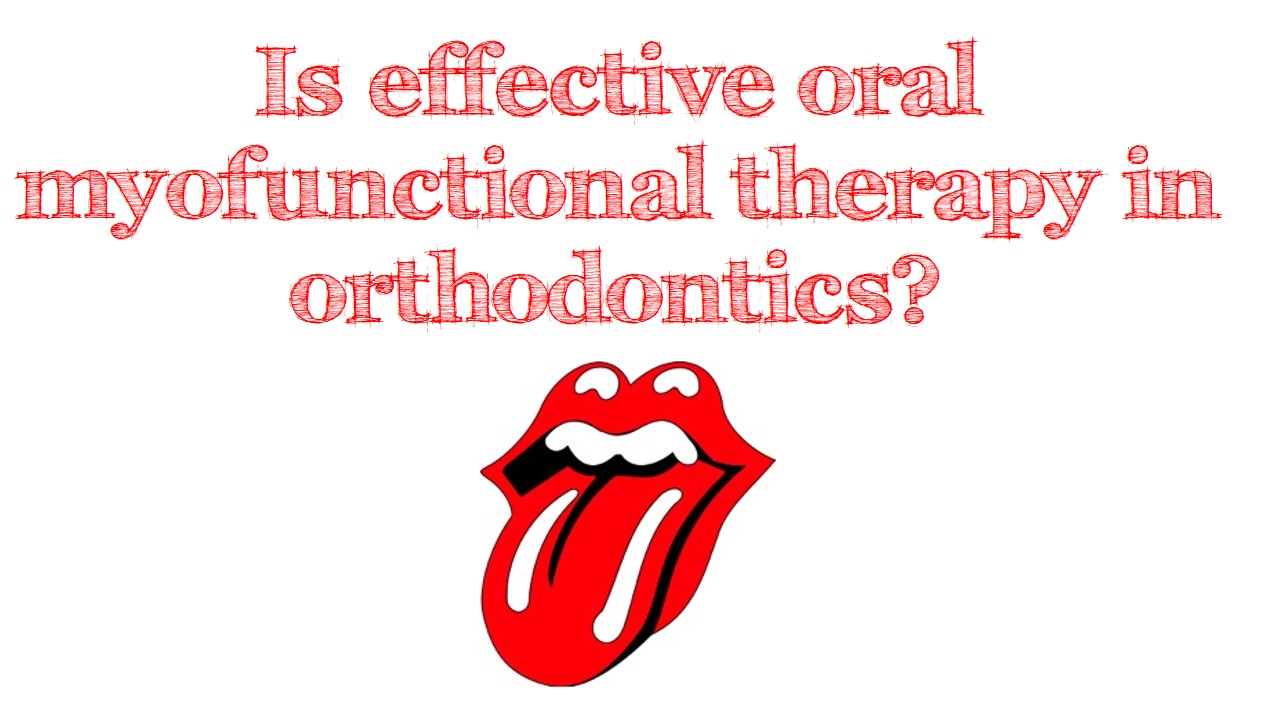Orthodontists mainly directly correct form. Due to globalization the American school influences the world´s daily therapeutic approach. It focuses on the anatomical correction relegating to the sidelines the functional rehabilitation in orthodontics. One reflection of this is the American´s minimum existing research on oral myofunctional therapy (OMT) and orthodontics. European classical school is characterized by give great importance to the functional component in a malocclusion, as the dento-maxillary orthopedists well know.
The long term stability of orthodontic correction is a treatment goal. The recurrence has been linked to the lack of functional normalization. That is why it is important to determine whether OMT is effective to correct oral functions and whether they influence the long-term stability. From the point of view of the patient (cost-benefit) it is also important to determine this, because the payment of an orthodontic treatment is expensive. If there is to be added a OMT treatment, the economic effort required is significant and the basis to indicate this must be firm, evidence-based quality.
Homam MA, et al conducted a systematic review on the topic. You can download for free clicking in here.
What is the objetive?
The aim of the review is to determine the scientific evidence to support the effectiveness of OMT as an adjunct to orthodontic treatment in subjects with facial disharmony.
What did they made?
They conducted a systematic review on the topic.
What did they find?
They located 355 studies of which only 4 were clinical controlled and met the inclusion criteria. The risk of bias is high. One analyzes the labial posture and concluded that OMT improved their posture. Another analyzed the influence of OMT in the treatment of class II compared to orthodontics and found to produce improvements. The third concluded that orthodontic open bite correction do not relpase only if OMT was realizated with orthodontic treatment. Finally he found the benefits of OMT in strengthening the masseter muscle post orthognathic surgery.
What is the quality of the study?
The review is well conducted by PRISMA statement and Cochrane. The search strategy is not entirely correct. EMBASE not seek, which is complementary to MEDLINE, so studies can be lost. No gray literature search performed, so there may be publication bias. Baseline studies are the problem, they are of low quality.
What is the critique?
This review is a wake-up call to OMT and orthodontics. There are no randomized clinical trials and only 4 controlled clinical studies, this is terribly alarming. Studies show are low, non-randomized and at high risk of bias. It should be investigated further in the interplay of OMT and orthodontics. Scientometric studies have noted that the highest concentration of scientific literature generated product of clinical research in OMT and registered in MEDLINE in recent years lies in the areas of “language and language disorders” and “hearing and disorders hearing”. The change in behavior towards evidence based clinical decisions remains a challenge and must continue to strive to move forward according to the current high standards of scientific quality. This should cover the different areas of action of orthodontics including other disciplines, such as OMT in this case.
The data from this review show that there is an advantage to speech therapy as an adjunct to orthodontic treatment in some malocclusions. This can not be quantified due to the scarce and weak evidence. A therapeutic effect observed in two studies that caught my attention is that malocclusion improves with OMT treatment alone, without prior orthodontic treatment (in open bite and skeletel class II). OMT is a powerful therapy and alone can change the altered form (malocclusion). These data are potentially useful for transdisciplinary therapeutic protocol design.
This conclusion is not what we expected and leaves us with “little flavor”, but unfortunately is based on currently available data. There’s a future ahead.
